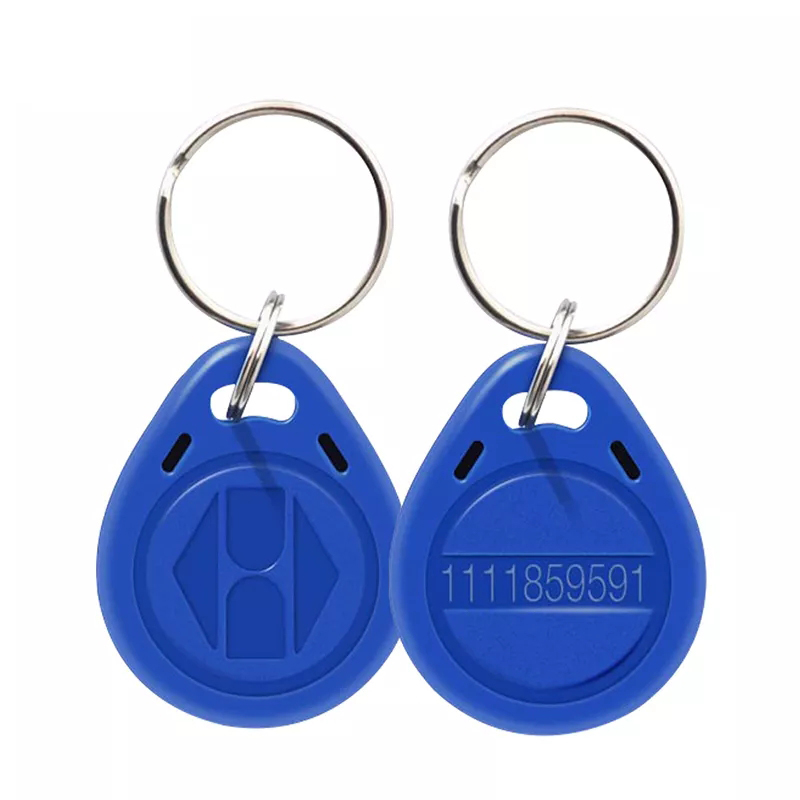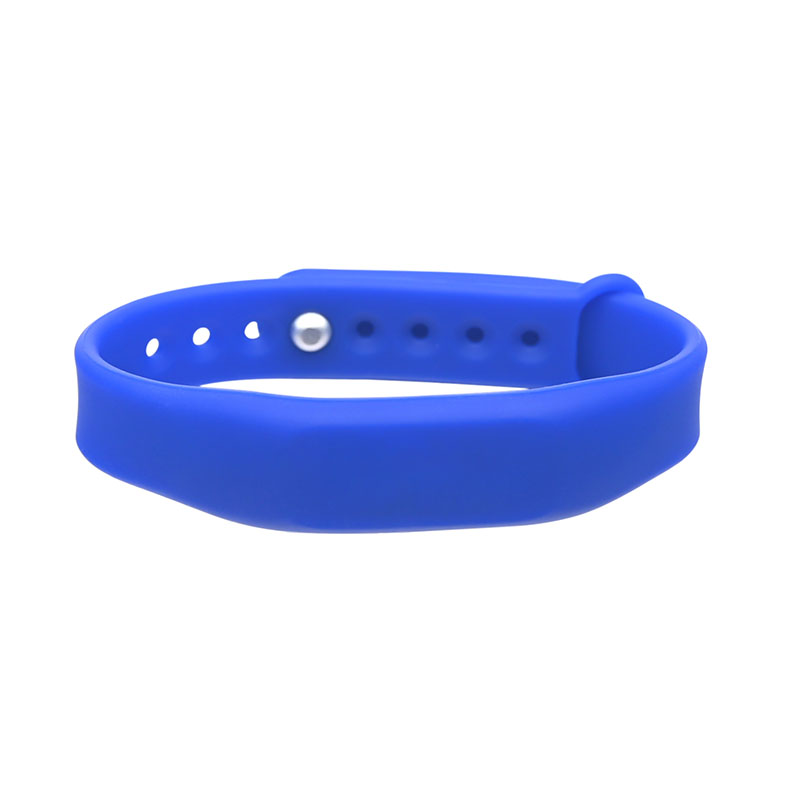
In the fast-moving landscape of digital transformation, businesses are constantly on the lookout for technologies that can streamline operations, reduce manual errors, and enhance customer experiences. One such technology gaining significant traction is nfc (Near Field Communication). NFC Tags, often small, inexpensive, and easy to implement, are quietly transforming how businesses manage assets, interact with customers, and secure supply chains.
In this comprehensive guide, we will explore the essence of NFC Tags, how they function, and the immense value they bring to modern enterprises. Whether you run a retail chain, a manufacturing plant, or a service-based business, understanding the capabilities of nfc can help you unlock new levels of efficiency and innovation.
nfc (Near Field Communication) is a short-range wireless technology that allows devices to communicate when placed within a few centimeters of each other. An NFC Tag is a passive device, usually embedded in a sticker, card, or object, that stores data readable by nfc-enabled smartphones, tablets, or readers. Unlike Bluetooth or Wi-Fi, nfc does not require pairing or complex setup, making it a simple and low-power solution.
Key Features of NFC Tags:
Contactless data transmission
No battery required (passive technology)
Fast and secure communication
Programmable and rewritable memory
Compact and cost-effective
NFC Tags typically contain a small chip and an antenna. When brought near an nfc reader, electromagnetic induction powers the chip, allowing it to transmit stored data. This interaction is instantaneous and seamless, which is why nfc is increasingly being used in both consumer and enterprise settings.
Top Business Applications of NFC Tags
1. Inventory and Asset Tracking
NFC Tags are widely used in logistics and warehouse management to improve inventory accuracy and visibility. Unlike traditional barcodes, NFC Tags can be scanned without direct line of sight and are more durable in harsh environments.
Benefits include:
Real-time inventory updates
Streamlined asset check-in/check-out
Integration with ERP and WMS systems
Reduced manual data entry errors
2. Smart Product Labeling and Packaging
NFC Tags embedded in product labels or packaging enable brands to share rich digital content with customers. With just a tap, consumers can access:
Product authenticity verification
User manuals and instructions
Promotional videos or coupons
Sustainability and recycling information
This type of smart packaging enhances brand engagement, trust, and transparency.
3. Contactless Payments and Digital Wallets
One of the most common uses of nfc technology is in contactless payments. Retailers, restaurants, and transportation providers use nfc-enabled terminals to accept payments from mobile wallets such as:
Apple Pay
Google Wallet
Samsung Pay
nfc ensures a secure, fast, and hygienic payment experience—especially critical in a post-pandemic world.
4. Brand Protection and Product Authentication
Counterfeiting is a major issue in industries such as luxury goods, electronics, and pharmaceuticals. NFC Tags can store unique identifiers that verify the authenticity of a product. When scanned, customers and businesses can access:
Product origin and batch number
Certificate of authenticity
Manufacturing and expiry dates
These measures help combat fraud and maintain brand integrity.
5. Access Control and Time Attendance
nfc cards or badges are used for secure access to office buildings, data centers, and restricted areas. Enterprises can implement nfc-based systems to:
Log employee attendance automatically
Monitor entry/exit logs in real-time
Enable tiered access control for different roles
This enhances workplace security while reducing administrative workload.
6. Customer Engagement and Marketing
nfc opens up innovative marketing opportunities. Marketers use NFC Tags in posters, brochures, or product displays to engage customers with:
Instant website redirection
App downloads
Social media engagement
Surveys and feedback collection
nfc enables hyper-personalized and interactive customer experiences.
7. Field Service and Maintenance
In industries where technicians service remote equipment, NFC Tags attached to machinery can provide instant access to:
Maintenance history
Technical documentation
Troubleshooting guides
This reduces service time, minimizes errors, and ensures compliance with standard procedures.
8. Healthcare and Patient Safety
NFC Tags are increasingly used in healthcare settings for patient identification, medication tracking, and equipment management. Benefits include:
Preventing medication errors
Tracking medical equipment usage
Accessing patient records instantly
By enabling accurate and real-time data access, nfc enhances patient safety and operational efficiency.
Benefits of NFC Tags for Business Efficiency
Reduced Operational Costs
By automating tasks like inventory checks, access control, and data collection, nfc technology reduces reliance on manual processes. This minimizes labor costs and increases throughput.
Improved Data Accuracy
Manual entry is prone to human error. nfc ensures that data is captured instantly and accurately, leading to more reliable reporting and better decision-making.
Enhanced Speed and Productivity
nfc interactions take less than a second, allowing rapid scanning of items, faster customer transactions, and efficient employee workflows.
Seamless Integration with Existing Systems
Most modern ERP, CRM, and POS systems can be integrated with nfc solutions. This allows businesses to leverage existing infrastructure without a complete overhaul.
Real-Time Visibility
With nfc, businesses gain real-time insights into assets, inventory, and personnel movements. This enhances transparency and agility.
Security and Traceability
NFC Tags can be encrypted and locked, ensuring secure data transmission. For high-value goods or sensitive environments, nfc provides an additional layer of protection.
Challenges and Considerations
Despite its many advantages, deploying nfc at scale involves certain challenges:
Cost vs. ROI
While NFC Tags are cost-effective for individual use, deploying thousands of them may involve significant initial investment. Businesses should evaluate ROI based on specific use cases.
Device Compatibility
Not all smartphones or terminals are nfc-enabled. This may affect user adoption and customer interactions in some markets.
Integration Complexity
Integrating nfc with legacy systems may require custom development or middleware. Proper planning and vendor support are essential.
Security and Privacy
Although nfc is inherently secure due to its short range, data encryption and access control measures must still be implemented to prevent unauthorized access.
Real-World Case Studies
Case Study 1: Retail Inventory Optimization
A global fashion retailer implemented NFC Tags across its inventory. The result: a 30% reduction in stock discrepancies, faster store replenishment, and improved on-shelf availability.
Case Study 2: Pharmaceutical Product Authentication
A pharmaceutical company used nfc to enable end-users to verify drug authenticity. Counterfeit claims dropped by 60%, and customer trust increased significantly.
Case Study 3: Event Access Control
An event management company deployed nfc wristbands for attendee check-ins. This reduced wait times by 70% and provided valuable data on attendee movement and engagement.
Future Trends in nfc Technology
As the Internet of Things (IoT) expands, nfc will play a crucial role in connecting physical assets to digital systems. Expect more smart devices with embedded nfc chips.
Sustainable and Recyclable NFC Tags
Eco-friendly businesses are pushing for biodegradable or recyclable NFC Tags to reduce environmental impact.
Advanced Data Analytics
Combining nfc data with analytics platforms will unlock deeper insights into consumer behavior, asset utilization, and operational performance.
Blockchain Integration
For industries requiring high trust and traceability, NFC Tags can be integrated with blockchain to create tamper-proof records of transactions and product histories.
How to Get Started with NFC Tags in Your Business
Define Clear Objectives – Identify specific problems nfc can solve, such as inventory tracking, customer engagement, or access control.
Choose the Right NFC Tags – Depending on the application, select chips with appropriate memory size, read range, and durability.
Select a Software Platform – Opt for platforms that support nfc data capture and integrate with your existing systems.
Pilot and Test – Begin with a small-scale pilot to test feasibility, usability, and integration.
Scale Gradually – Once the system is validated, roll out across departments or locations.
Train Your Staff – Provide training to ensure smooth adoption and maximize ROI.
Monitor and Optimize – Continuously track performance and look for new ways to improve efficiency through nfc.
Conclusion
NFC Tags are more than just a convenience—they are a strategic asset for businesses aiming to enhance operational efficiency, strengthen security, and create better customer experiences. With their low cost, ease of use, and versatile applications, NFC Tags have become indispensable tools across industries ranging from retail to healthcare.
As more businesses embrace digital transformation, those leveraging nfc technology will be better positioned to compete, innovate, and grow in a data-driven world. Now is the time to explore how nfc can unlock new opportunities for your enterprise.
Ready to implement nfc in your business? Reach out to our team for a customized consultation and discover the right solution for your needs.
Why Choose Us?
Established in 2010 – Over a decade of rfid experience
Full customization – rfid cards, wristbands, key fobs, and smart devices
High quality – ISO-compliant materials (ISO 14443, ISO 15693)
Secure solutions – Encrypted protocols and data protection
Flexible scalability – From startups to enterprise-level projects
Contact us today to learn how we can help streamline your inventory management with reliable, smart rfid solutions.





